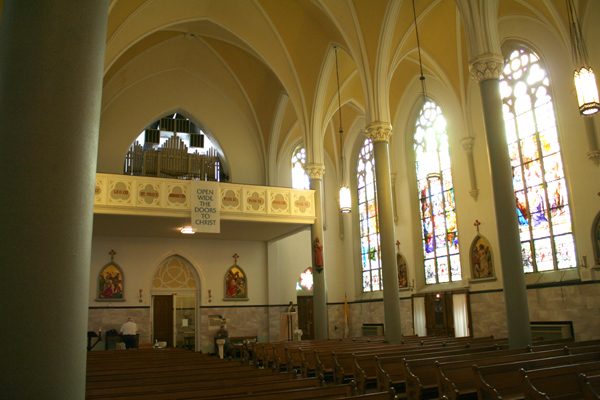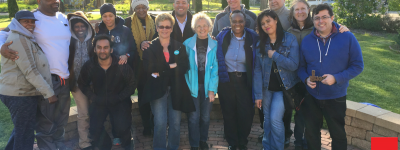It is one thing to understand the essentials of restorative justice, but it is another to embody these essentials in parish life.
At Our Lady of the Holy Cross Catholic Church in Baden, Missouri, where I serve as pastor, our community recognized that the restorative justice circle model of dialogue could be an invaluable resource to our parish.
We began seeking out opportunities to implement circles in our community — a process which takes time, care, and creativity.

Racial Justice Film Circles
Some of the most notable circle conversations we initiated have been those involving racial justice films.
In this case, a circle will follow a Sunday afternoon movie, which is chosen for its pronounced racial theme. It is amazing how an interesting movie can, in an unimposing way, touch viewers’ hearts and draw out interesting perspectives, as well as personal stories.
Perspectives beget more perspectives, and personal stories beget more personal stories. The experience is authentic. Participants are made to feel good about themselves and others, even if they do not necessarily agree on issues.
Sunday Scripture Circles
One of my favorite types of parish circles are those held immediately after Sunday Mass, in which we discuss the day’s Scripture readings. On some occasions, these circles have gone on for two hours, simply because the participants become so engaged and the discussion so transcendently meaningful.
Catholics are accustomed to attending Sunday liturgy and hearing one voice — that is, the preacher’s. The Sunday circle allows every participant to have a voice, if he or she so desires.
At one such circle, I simply asked the group what they thought. An energetic, elderly African American man remarked that after 50 years of being a Roman Catholic, that was the first time a priest had ever asked him about his experience of the Gospel.
Applications Beyond Criminal Justice
In the strict sense, restorative justice involves a process of healing with the preeminent concern for those attempting to rebuild their community in the aftermath of a wrongful action. In this way, restorative justice could be a viable alternative to the current failing judicial system, which is based more on a retributive notion of justice demanding punishments and rewards.
But beyond the context of criminal justice, I believe restorative justice has a great deal to offer our Catholic parishes, helping parishioners feel self-empowered and marginalized neighbors enjoy welcome and freedom, not just handouts.
A circle discussion can be an effective way to allow parishioners to have difficult conversations which are typically avoided, such as those related to race, church scandals, challenging teachings, and other tense parish matters.
The circle model can also be helpful in outreach programs, where neighbors from the broader community find it difficult at times to overcome their social isolation and find connection with each other, as well as with parishioners.
I have witnessed the circle model help neighbors who were otherwise perfect strangers become friends in a single meeting.
"Fruit in Abundance"
In many ways, I see restorative justice played out in the well-known biblical image of the vine, connected branches, and abundant fruit.
Any healthy vine or fruit-bearing tree requires care and time-consuming cultivation. The soil must be fertile and the branches pruned. Only when the conditions are just right are the vines able to become strong, hardy, and able to fight off disease.
So it is with restorative justice. After years of patience and care, there appears what everyone has always wanted — fruit in abundance.






